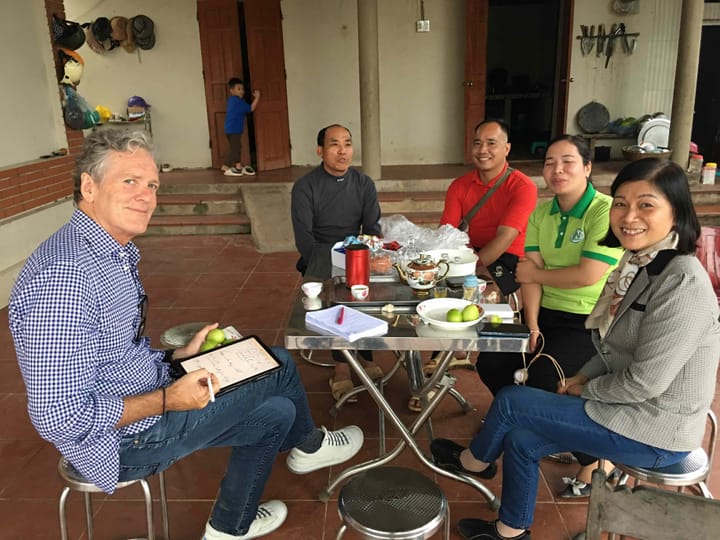Public Private Dialogue

This article examines the role of public-private dialogue in private sector development. It answers the questions: What is public-private dialogue? Why is it important? How can public-private dialogue be improved?
What is public-private dialogue?
Public-private dialogue (PPD) is the interaction between government and business for business environment reform purposes. It is an essential element to the process of reform that responds to business interests and balances these interests with the demands of the economy and community.
Regular, well-informed and evidence-based PPD improves the business environment leading to a positive impact on economic growth by increasing the rate of investment and the productivity of investment.
Dialogue between the public and private sectors is not a new concept. It has been a feature of public life for decades in many countries. However, in recent years has seen an upsurge in interest in PPD as a means for promoting private sector development and as a part of the process of business environment reform. It is also a key ingredient in the process of inclusive growth.
Public-private dialogue comes in many forms. It can be structured or ad hoc, formal or informal, wide-ranging or focused on specific issues. It can be initiated by forward-thinking governments, frustrated business representative organisations, or third parties such as international donor and development agencies.
Public-private dialogue can take place at local, national or international levels. It can also be organised by industry sectors, within industrial clusters, along a selected value chain, or it can cover broad, crosscutting economic issues (e.g., employment, taxation, green growth).
PPD is an ongoing activity. From a business perspective, it encourages business representative organisations to establish and maintain regular contact with key public sector actors and not just when advocating for change. Dialogue is a prerequisite for effective advocacy.
Dialogue implies regular contact between private and public. Sometimes because the private sector wants to influence a particular policy or decision, but often simply to ensure each party understands the others’ interests and needs. This is important, not only because it can provide advance notice when the public sector is thinking of regulating, but also because there are established channels of communication to ensure each party can quickly understand the position of the other.
PPD and social dialogue
While related, there are important differences between PPD and social dialogue.
The International Labour Organization’s definition of social dialogue includes all types of negotiation, consultation or simply the exchange of information between, or among, representatives of governments, employers and workers, on issues of common interest relating to economic and social policy. Social dialogue can exist as a tripartite process, with the government as an official party to the dialogue, or it may consist of bipartite relations between labour and management only (e.g., trade unions and employers’ organisations), with or without indirect government involvement.
Like PPD, social dialogue processes can be informal or institutionalised, and can take place at national, regional or sectoral levels. However, unlike PPD, social dialogue can also occur at the enterprise level.
The main goal of social dialogue is to promote consensus building and democratic involvement among the main stakeholders in the world of work. Successful social dialogue structures and processes have the potential to resolve important economic and social issues, encourage good governance, advance social and industrial peace and stability, and boost economic progress.
What are the benefits of public-private dialogue?
The United Nations 2030 Agenda (Transforming Our World: the 2030 Agenda for Sustainable Development) acknowledges the important role of a diverse private sector in the achievement of sustainable development. It calls on all businesses “to apply their creativity and innovation to solving sustainable development challenges.”
Maximising the private sector’s financial and non-financial contributions to sustainable development requires constructive engagement between the public and private sectors, as well as with civil society actors. Effective PPD is a precondition for enhanced collaboration between public and private actors.
The main potential benefits of PPD include:
- Facilitating investment climate and business environment reforms. Public-private dialogue works by facilitating, accelerating or cementing reform initiatives by boosting stakeholder pressure. While structured PPD can have an immediate effect in improving the quality of reforms, its deeper benefit lies in building a sustainable constituency for reform.
- Promoting better diagnosis of investment climate and business environment problems and the design of reforms. Governments that listen to the concerns of the business community are more likely to devise sensible, prioritised plans and workable reforms.
- Making policy reforms easier to implement. Public-private dialogue can help to ensure reforms actually take effect on the ground. Dialogue can informal all parties of recent changes, feed information back to reformers and keep up the pressure for action.
- Promoting transparency and good governance. By taking a broader view of the economy and interacting openly with the business community and civil society, government policymakers set a good example. This includes the use of rigorous cost-benefit analysis, and the use of public scrutiny. PPD can save time and effort by establishing checks and balances for business demands, allowing the ramifications of measures to be discussed before they are implemented, and ideally nurturing in the private sector a more rounded view of what’s good for the economy as a whole.
- Building an atmosphere of mutual trust and understanding. Public-private dialogue can build consensus, trust and understanding between the public and private sectors simply by bringing people together on a regular basis and allowing them to get to know each other. This helps to improve social cohesion and civil society.
How can public-private dialogue be improved?
While PPD is broadly defined, including state and business interactions that may be informal, irregular and undocumented, there are features of “good” and effective PPD.
In some cases, state and business interactions or PPD may be non-existent. This will require the design of new PPD structures and processes. In other cases, there will be some form of PPD on which to build.
Charter of Good Practice in using Public-Private Dialogue
Developed in 2006 and updated in 2015, the Charter of Good Practice in using Public Private Dialogue for Private Sector Development provides useful guiding principles for successful PPD:
- Principle I: Contextual Design. PPD can take several forms and can take place at various levels within different timeframes.
- Principle II: Open Governance Process. PPD needs to function under open, transparent, and fair governance rules. PPD will be more likely to succeed if its governance structure is designed to take into account political economy factors.
- Principle III: Mandate and Institutional Alignment. A statement of objective is helpful for clarity. A formal or legal mandate can be helpful in some political and economic contexts, but mandates are never sufficient to establish good PPDs. Wherever hosted and whenever possible, PPDs should be aligned with existing institutions to maximize the institutional potential and minimize friction.
- Principle IV: Structure and Participation. PPD should have a solid structure and representative participation. The structure should be manageable while flexible, enable participation to be both balanced and effective, reflect the local private sector context and stakeholders’ interests.
- Principle V: Facilitation. The PPD process needs to be facilitated professionally with dedicated people and resources, so as to efficiently manage all aspects of the dialogue process with a view to delivering results.
- Principle VI: Champions. Leadership from a set of individuals or organisations is often necessary to reduce the trust gap, sustain the energy and nourish participation over the long run.
- Principle VII: Outputs. Outputs can take the shape of structure and process outputs, analytical outputs, soft outputs or recommendations. While all should contribute to agreed private sector development outcomes, the PPD should aim for tangible, practical and measurable benefits.
- Principle VIII: Outreach and Communications. Enabling communication of a shared vision and understanding through the development of a common language is essential for building trust among stakeholders and keeping them engaged.
- Principle IX: Monitoring and Evaluation. Monitoring and evaluation is an effective tool to manage the public-private dialogue process and to demonstrate its purpose, performance and impact.
- Principle X: Appropriate Area and Scope. The dialogue process should be tailored to the set of issues to be addressed and consider the implications for sub-issues that are part of a larger agenda, and smaller jurisdictions that can play a role in the change process. Local and sector-specific public-private dialogues have strong potential for focused results. National and economy-wide platforms and local and sector specific initiatives would gain by coordinating their agendas, so as to best serve the interests of their constituencies.
- Principle XI: Crisis and Conflict Response. PPD is particularly valuable in crisis, conflict and fragile environments to mitigate entrenched interests, rebuild trust and accelerate inclusive and sustainable growth. PPD mechanisms can also work towards resolving disputes and reconciling views of different stakeholders on particular issues.
- Principle XII: Development Partners. PPD can benefit from the input and support of development partners when their role is determined by the local context, demand driven, and based on partnership, coordination and additionality.
- Principle XIII: Sustainability. Sustainability or exit refers to the transfer of operations, management or financing of a PPD by a development partner to local institutions. Achieving sustainability is a challenge for a PPD and requires the commitment of all PPD actors.
Recently, the Global Partnership for Effective Development Cooperation and its stakeholders examined the quality of PPD, particularly within the context of the coronavirus pandemic. This led to the production of a self-reflection guide on the current practice of PPD, its role in private sector engagement, and future directions for PPD within the framework of the 2019 Kampala Principles for Effective Private Sector Engagement.
Among other findings, this monitoring showed how trust is critical for successful PPD. Trust between public and private actors delivers better results and leads to joint action. It is a “critical pre-condition of an enabling context for effective dialogue.”
Other key measures of success included readiness (i.e., the extent to which public and private actors are able and ready to engage with one another; relevance (i.e., the extent to which existing dialogue addresses issues of concern to both sides; and inclusiveness (i.e., the level of inclusiveness of participation in public-private dialogue, spanning the full diversity of private sector stakeholders).
Contemporary challenges for PPD
There are many challenges to improving PPD around the world. Indeed, these are not limited to developing and emerging economies alone. Many developed and advanced economies could improve the way the state and business sectors interact.
Below is a very brief comment on a few of these challenges:
PPD and social inclusion. As indicated above, there is nothing new about government and business dialogue. However, the challenge presented by PPD is to open the process and make sure it is not dominated by elites. It is important for PPD structures and processes to reflect a broad representation of the business community. This includes micro and small enterprises, women-owned and managed enterprises, rural-based businesses, and a range of businesses from various industry sectors. Not all of these businesses will be well represented by business membership organisation (e.g., informal or unregistered businesses). Thus, extra effort will be required to find ways for more inclusive forms of dialogue.
PPD in fragile and conflict-affected situations. The World Bank notes that PPD in these situations may have a much greater impact because it rebuilds missing institutions and societal structures that address challenges caused by conflict and fragility. PPD can build trust between stakeholders, give voice to excluded groups, contribute to peacebuilding, and address economic and social issues that otherwise could trigger conflict.
PPD and digital technologies (ePPD). The use of digital technologies is opening the ways dialogue can be done. Information and communication technologies and other forms of data collection and analysis are increasingly being incorporated in PPD processes. This ranges from phone and email surveys to online portals for learning about regulatory reform updates, to online consultation platforms for two-way communication. Digital technologies are also being used more frequently in regulatory delivery, which includes processes for feedback and reform.
Summary
The process of reform is challenging. It involves many actors and requires governments to find the right balance among sometimes competing interests. Public-private dialogue provides a means for governments and businesses to interact regularly in an open and transparent manner, to build trust and to come to better understand the problems each party faces.


